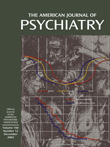In 1886 Anna Agnew wrote her story (From Under the Cloud) of 7 years (1878–1885) at the Indiana Hospital for the Insane. This account of her illness, her treatment, and the interactions with her family and community provided poignant insights into the experiences of people with mental illness and became part of the mental illness reform movement of the last quarter of the 19th century. Lucy King has put this account into context, providing much information about Anna Agnew’s life and that of her family and, in addition, has added historically rich descriptions of the state of psychiatric care of that era.
Anna Agnew was 42 and the mother of three young boys when she was hospitalized with what was described as “acute mania,” with suicidal and homicidal “propensities.” She later described the onset of this episode to have occurred suddenly 2 years previously “on the night of November 19… something had come over me!” She goes on to point out that her family had “cruelly, or ignorantly, which?” kept her at home “after the time when common sense, if not common humanity should have decided that such [the asylum] was the proper place for me.”
King quotes Dr. Joseph Rogers, the superintendent during most of Anna Agnew’s hospitalization, in his description of “moral therapy,” which had emerged in England, France, and Italy in the last decade of the 18th century. Rogers, who later became the 27th President of the American Medico-Psychological Association (subsequently APA), noted that “pleasant social and material surroundings are necessary to general well being”; he was pleased that “several of the clergymen of Indianapolis have kindly offered to conduct quiet religious services with short homilies.” Rogers’s successor as superintendent at Seven Steeples, Dr. William Fletcher, became famous for burning all the restraints in the hospital on Christmas Day, 1883.
Unfortunately, much of Anna Agnew’s hospital treatment did not reflect “moral therapy.” Frequently the attendants, and occasionally nurses and physicians, were demanding, harsh, uncaring, and even sadistic. Some of this may have been due to the overcrowding that was occurring in many state institutions as a result of increasing immigration and the growth of urban centers. King points out that at the time of Agnew’s admission the census of the hospital was 614 and that 7 years later, when she was discharged, the census had swelled to 1,454. Another major problem was the lack of adequate training for the attendants. King quotes Agnew that there would continue to be abuse “until state laws require that none but those who are fitted for the sacred duties of attendants upon the insane be employed.” A third factor identified by King was the discrimination against women that existed in society at large and was clearly reflected in all of medical care. This last issue is a main theme of
Women of the Asylum (1), which includes 26 first-person accounts of women placed in mental institutions from 1840 to 1945, one of which is Anna Agnew’s.
Dr. King’s clinical expertise is evident as she discusses current treatment of bipolar disorder (Anna Agnew’s probable diagnosis) throughout the book. King’s scholarship in the history of psychiatry is also evident throughout this splendid brief work as she reviews major developments in the understanding and treatment of mental illness over the last 150 years.

